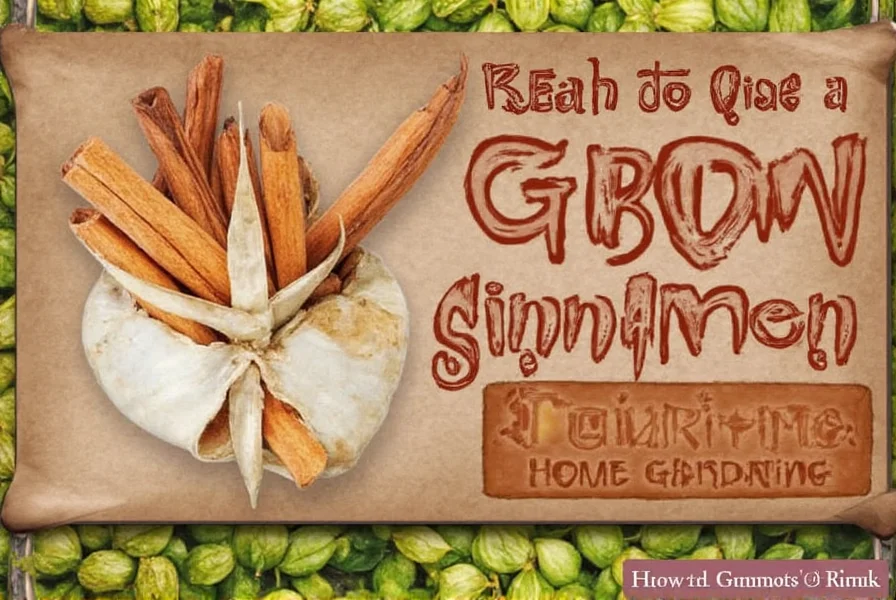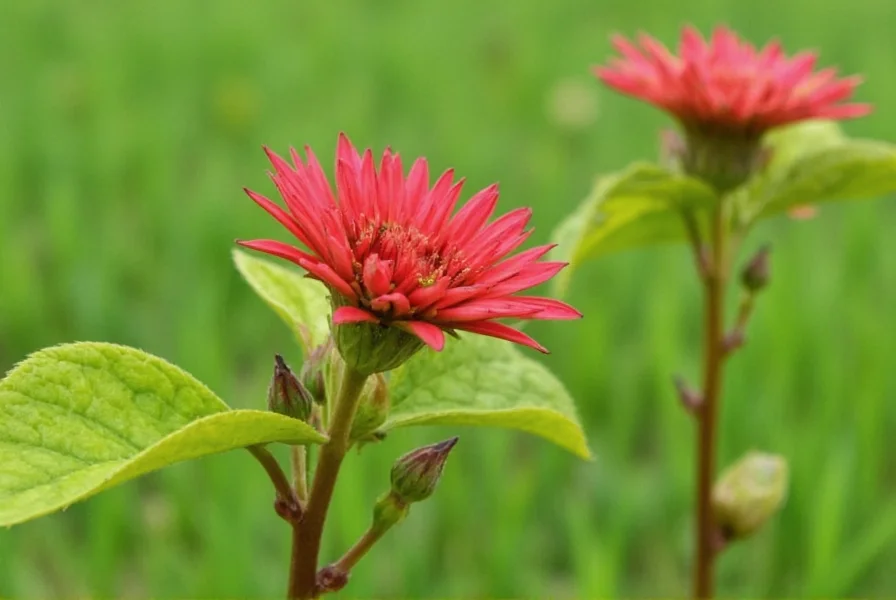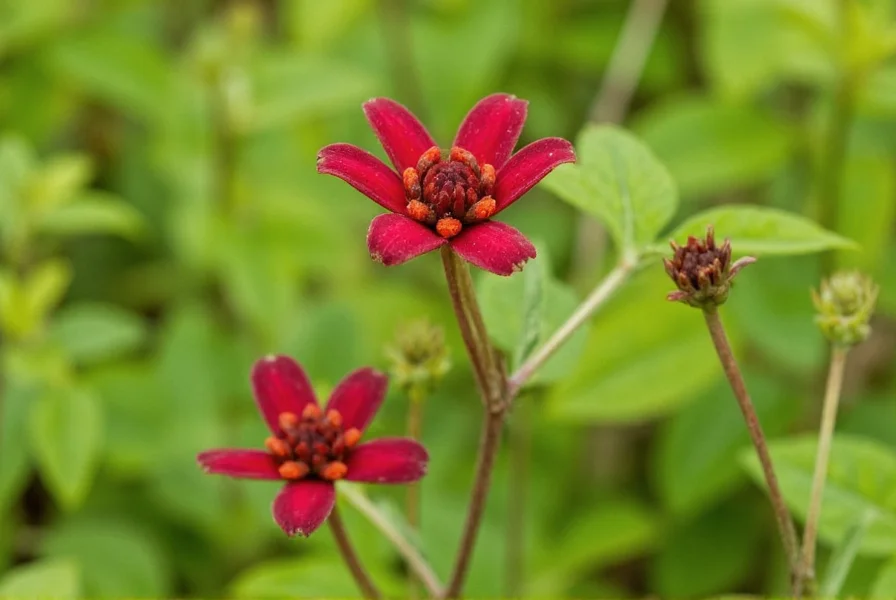Many home gardeners dream of harvesting their own cinnamon spice, but few realize the specific tropical conditions required for successful cultivation. True cinnamon (Cinnamomum verum), often called Ceylon cinnamon, is a slow-growing evergreen tree native to Sri Lanka that produces the delicate, sweet spice prized by chefs worldwide. Unlike its stronger cousin cassia (Cinnamomum cassia), true cinnamon requires careful attention to thrive outside its natural habitat.
Understanding Cinnamon Plant Varieties
Before starting your cinnamon-growing journey, distinguish between the two primary types:
| Characteristic | True Cinnamon (Ceylon) | Cassia Cinnamon |
|---|---|---|
| Scientific Name | Cinnamomum verum | Cinnamomum cassia |
| Flavor Profile | Mild, sweet, complex | Strong, pungent, spicy |
| Bark Structure | Multiple thin layers | Single thick layer |
| Cultivation Difficulty | More challenging | Less demanding |
| Hardiness Zones | 10-12 | 9-11 |
For home cultivation, Cinnamomum verum offers superior flavor but demands more precise conditions. Most gardeners outside tropical regions achieve better results with cassia, though true cinnamon remains the goal for dedicated growers.
Essential Climate Requirements for Growing Cinnamon
Cinnamon trees thrive in environments mimicking their native Sri Lankan habitat. The ideal conditions include:
- Temperature: Consistent warmth between 70-95°F (21-35°C) with no exposure to temperatures below 50°F (10°C)
- Humidity: 60-80% relative humidity for optimal growth
- Light: Partial shade (4-6 hours of morning sun) for young trees, increasing to full sun as they mature
- Rainfall: 70-100 inches annually, distributed evenly throughout the year
Gardeners in USDA zones 10-12 can grow cinnamon outdoors year-round. Those in cooler climates must bring container-grown trees indoors when temperatures drop below 60°F. During winter months, maintain indoor temperatures above 65°F and increase humidity using pebble trays or humidifiers.

Soil Preparation for Cinnamon Cultivation
The right soil composition proves critical for successful cinnamon growth. These trees require:
- Drainage: Excellent drainage to prevent root rot (cinnamon roots cannot tolerate waterlogged conditions)
- pH Level: Slightly acidic to neutral (6.0-7.0)
- Texture: Loamy soil rich in organic matter
Create an ideal growing medium by mixing:
- 40% high-quality potting soil
- 30% perlite or coarse sand
- 20% compost
- 10% coconut coir
For outdoor planting, amend native soil with these components to improve drainage and fertility. Container growers should refresh the top 2 inches of soil annually with fresh compost to maintain nutrient levels.
Propagation Methods: Seeds vs. Cuttings
Two primary methods exist for starting your cinnamon tree, each with distinct advantages:
Growing Cinnamon from Seeds
Fresh cinnamon seeds offer the most genetically diverse plants but present challenges:
- Use seeds harvested within 2 weeks for best germination rates
- Soak seeds in warm water for 24 hours before planting
- Plant 1/4 inch deep in moist seed starting mix
- Maintain consistent warmth (80-85°F) and high humidity
- Expect germination in 2-6 weeks
Seed-grown trees typically develop stronger root systems but take longer to mature. The process of how to grow cinnamon tree from seed requires patience, as germination rates decrease significantly with seed age.
Propagation from Cuttings
For faster results, semi-hardwood cuttings provide a reliable alternative:
- Select 6-8 inch cuttings from current season's growth
- Remove lower leaves, leaving 2-3 at the top
- Dip base in rooting hormone
- Plant in perlite-vermiculite mix
- Maintain high humidity with plastic covering
- Root development typically occurs in 8-12 weeks
Cuttings produce genetically identical plants to the parent and often reach harvestable size one year faster than seed-grown trees. This method proves particularly valuable when growing cinnamon in non-tropical climates where time to maturity matters.
Planting and Early Care
Whether starting from seed or cutting, proper planting technique ensures strong establishment:
- Choose containers with ample drainage holes (at least 1 gallon for starters)
- Plant at same depth as nursery container or propagation medium
- Water thoroughly after planting, then allow top inch of soil to dry between waterings
- Provide filtered light for first 2-3 months
- Fertilize monthly with balanced 10-10-10 formula diluted to half strength
Young cinnamon trees benefit from protection against direct afternoon sun. As the plant matures (typically after 12-18 months), gradually increase sun exposure. Container growers should repot every 1-2 years into progressively larger containers, eventually reaching 15-20 gallon size for mature trees.
Watering and Fertilization Requirements
Consistent moisture management proves essential for healthy cinnamon growth. Follow these guidelines for optimal cinnamon plant watering requirements:
- Water when top inch of soil feels dry (more frequently in summer, less in winter)
- Avoid both drought stress and waterlogged conditions
- Use room-temperature water to prevent root shock
- Mist leaves regularly to maintain humidity, especially indoors
For fertilization, cinnamon trees respond well to regular feeding during active growth periods:
- Apply balanced liquid fertilizer (10-10-10) monthly during spring and summer
- Reduce to every 6-8 weeks in fall and winter
- Supplement with magnesium and iron if yellowing leaves appear
- Organic options: compost tea or fish emulsion every 4-6 weeks
Over-fertilization causes leaf burn, while under-fertilization results in stunted growth. Monitor your plant's response and adjust accordingly.
Pruning and Maintenance Techniques
Proper cinnamon tree pruning techniques encourage bushier growth and facilitate future bark harvesting:
- Begin pruning when tree reaches 2-3 feet in height
- Remove dead or damaged branches immediately
- Pinch back growing tips to encourage lateral branching
- For bark production, allow 2-3 main stems to develop
- Remove lower branches to create a clear trunk section for harvesting
Unlike many fruit trees, cinnamon doesn't require extensive annual pruning. Focus on maintaining an open structure that allows light penetration and air circulation. When growing indoors, regular rotation ensures even growth toward light sources.
Pest and Disease Management
Cinnamon trees generally resist most pests but remain vulnerable to several issues:
Common Pests
- Scale insects: Treat with horticultural oil or insecticidal soap
- Spider mites: Increase humidity and spray with neem oil solution
- Mealybugs: Remove with cotton swab dipped in rubbing alcohol
Disease Prevention
- Root rot: Prevent by ensuring excellent drainage and avoiding overwatering
- Leaf spot: Remove affected leaves and improve air circulation
- Anthracnose: Treat with copper-based fungicide if severe
Regular inspection helps catch problems early. For indoor plants, wipe leaves periodically with damp cloth to remove dust and potential pests. Avoid chemical pesticides when possible, as cinnamon trees are sensitive to many synthetic treatments.
Harvesting Cinnamon Bark
The moment you've been waiting for arrives 2-3 years after planting, when stems reach 1.5-2 inches in diameter. The when to harvest cinnamon bark question has a precise answer:
- Harvest during rainy season when bark separates easily from wood
- Select 2-3 year old stems with diameter of 1.5-2 inches
- Cut stems to 2-3 foot lengths
- Making two parallel cuts 12 inches apart, then connect with two vertical cuts
- Carefully peel bark from wood using a knife
- Remove outer bark, leaving only the inner bark layer
- Layer strips inside each other to form characteristic quills
- Air dry for 3-7 days until brittle
Never remove more than 50% of a tree's stems in one season. Allow at least one year between harvests for recovery. First harvests yield smaller quills with less intense flavor; subsequent harvests produce higher quality spice.

Growing Cinnamon Indoors and in Containers
For gardeners outside tropical zones, cinnamon plant care indoors requires special attention:
- Choose dwarf varieties when available
- Provide 12-14 hours of bright, indirect light daily (supplement with grow lights in winter)
- Maintain humidity above 60% using humidifiers or pebble trays
- Rotate container weekly for even growth
- Monitor soil moisture carefully—containers dry faster than ground soil
- Use filtered water to prevent mineral buildup from tap water
Container-grown cinnamon rarely reaches full size but can still produce harvestable bark after 3-4 years. During warm months, gradually acclimate indoor plants to outdoor conditions to boost growth rates. Always bring plants indoors before nighttime temperatures drop below 60°F.
Common Mistakes to Avoid
Many aspiring cinnamon growers encounter preventable issues. Steer clear of these pitfalls:
- Overwatering: Cinnamon roots rot easily in soggy soil
- Insufficient light: Leads to leggy growth and poor development
- Ignoring humidity needs: Causes leaf browning and stunted growth
- Harvesting too early: Bark from young stems lacks flavor and proper structure
- Using incorrect soil: Heavy clay soils prevent proper drainage
- Expecting quick results: Patience is essential—cinnamon is a slow developer
Remember that how long does it take to grow cinnamon has no shortcut answer. Quality cinnamon production requires time and proper care. Rushing the process yields inferior results.
Processing and Storing Your Homegrown Cinnamon
After harvesting, proper processing maximizes flavor and shelf life:
- Air-dry quills for 3-7 days until brittle
- Break quills into smaller pieces for easier storage
- Store in airtight glass container away from light and heat
- Ground cinnamon loses potency faster than whole quills
- Properly stored, homegrown cinnamon maintains peak flavor for 1-2 years
For immediate use, you can grind small amounts in a spice grinder or mortar and pestle. Homegrown cinnamon typically has more complex flavor than store-bought varieties due to freshness and lack of processing.











 浙公网安备
33010002000092号
浙公网安备
33010002000092号 浙B2-20120091-4
浙B2-20120091-4